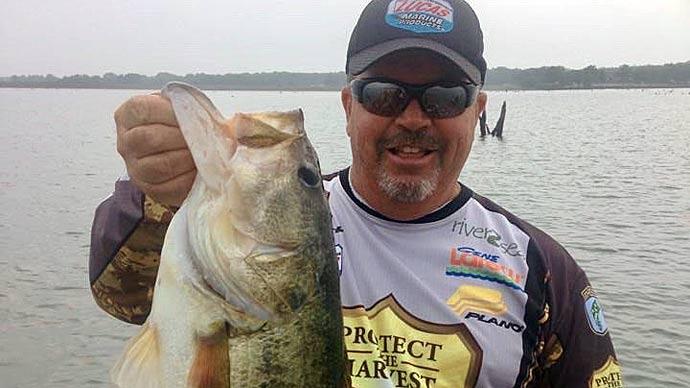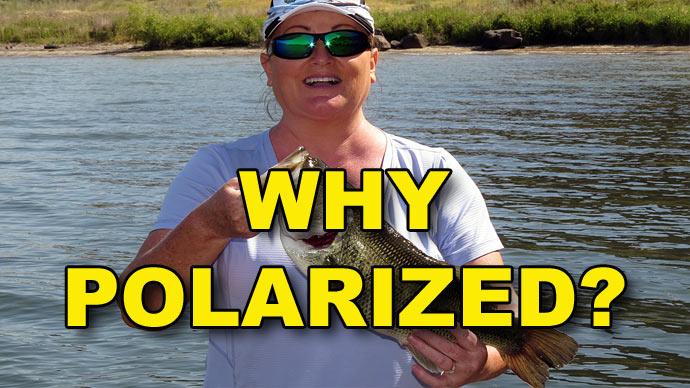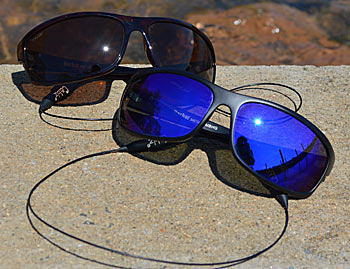
Conversations between anglers can go many places during a day of fishing. Some points are casual, and others are important. One is nearly universal when bass are spawning. A version of it happened between South Carolina residents and Major League Fishing anglers Marty Robinson and Casey Ashley during a day of fishing several years ago on Santee Cooper, the interconnected pair of shallow cypress tree-filled lakes in their home state that is well-known for springtime sight fishing. Here’s how Ashley remembers it:
“You see that big fish over there on the bed?” Robinson asked.
“Where? Right there?” Ashley replied.
“You don’t see that big white bed over there?” Robinson asked again.
“No?!?” Ashley said.
Ashley knew what he was looking for, but the conditions — waves, water clarity, sun — clouded his vision. The only difference between him and Robinson was their sunglasses. Both pairs were made specifically for fishing by Costa Del Mar, but Robinson’s lenses were a different color than the ones in Ashley’s sunglasses. “I put his on, and it was like someone shined a spotlight over top of [the bed],” Ashley said.
Sunglasses are one bass-fishing accessory that doesn’t always receive the attention they deserve. Many anglers agonize over a crankbait's color, length, action, and sound but grab the first pair of sunglasses that look cool and are priced right. That’s a mistake. Ashley said sunglasses deserve equal pondering because they play an equal role in a successful day on the water.
Why invest in sunglasses
No one will argue that quality sunglasses cost quality bucks. Top-end sunglasses are priced from under $100 to more than $200. But before you say a pair of those aren’t for you, Ashley asks you to do some math.
“Everybody always says I can’t justify paying that much for a pair of sunglasses,” Ashley said. “But how many cheap pairs have you bought, stuck them on your hat, and blown them off? And you don’t care about them because they didn’t cost you much.” But if you saved the money spent on those, you could invest in one better pair. “And if you did, you’d take better care of them,” he said.
Money buys you more than a name. It brings a bigger selection of lens colors, higher grade optics, and more durable materials. And those add up to sunglasses you’ll wear more often and will help you see more bass, cover, and structure under the water. Here’s what to consider when selecting a pair.
Lens material
Regular sunglasses aren’t enough for most fishing situations. Anglers need ones with polarization, which cuts the blinding glare caused by sunlight reflecting off the water’s surface. Polarization is accomplished with a unique film that only allows light waves vibrating in specific directions to pass through. So, light coming down on the water passes through the film, but what’s reflecting off the surface stops. That helps you see deeper into the water.
The polarization film is sandwiched between layers of lens material, either glass or plastic. Both are used in quality sunglasses. Choosing one is an important decision, so carefully consider the characteristics of each.
Glass lenses are more durable than plastic ones, Ashley said. And on impact, whether dropped on the ground or hit by a projectile, they’ll shatter but not come apart. They also are more abrasion resistant than plastic, even ones with a mirrored finish. “You can take a key, and you can’t scratch them,” he said. “They’re more ‘people resistant.’”
Plastic lenses have their place, too. They weigh less than glass lenses. That can make them comfortable to wear and better at staying on your face, especially when sweat on hot and humid days can cause heavier models to slip. They’re relatively less expensive, too.
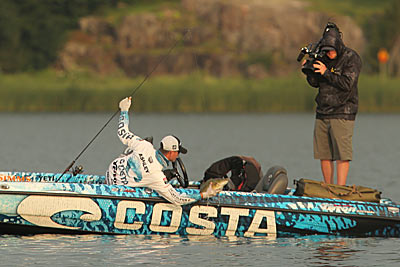
Make sure your sunglasses eliminate all ultraviolet light regardless of which material you choose. It’s present on cloudy days, too, and prolonged exposure can damage your sight.
Lens color
Lenses come in every color under the rainbow, especially when you count mirrored finishes. Each one shines under certain conditions and has anglers who swear by it. That’s because each downplays specific colors and highlights others. And mirror finishes do more than look cool. Ashley said they further reduce the light coming through the lens.
Typically, amber, yellow, and copper lenses help you see into the water better during low-light conditions such as early or late in the day or under overcast skies. And traditional gray lenses are best when the sun is brightest. This difference was between seeing and not seeing during Robinson and Ashley’s trip to Santee Cooper. “I had grey lenses,” Ashley said. “His were amber.”
Ask Ashley to pick one lens color for freshwater fishing day in and day out, which would be copper-colored with a green mirror. Even if he’s not looking for individual fish, he said it helps him see the pieces of submerged cover and depth changes where they live. He wears a different pair on the coast. “If you are going saltwater fishing, you need a blue mirror because the water is a lot brighter and creates more reflection,” he said.
Investing in a second pair of sunglasses with a different lens color makes you more versatile. “If I’m solely sight fishing, I may change colors,” Ashley said. And that second pair will have an amber lens with a silver mirror. The silver mirror blocks more light, which gives him an edge in tea-colored tannic waters such as what flows in Florida and fills the aforementioned Santee Cooper. He said they help in stained water, too.
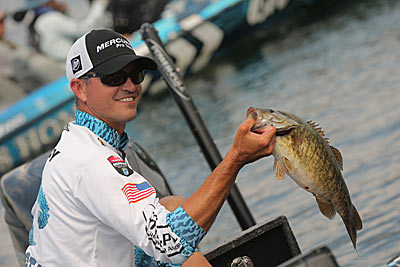
The amber lenses with a silver mirror have other advantages. “I can wear those all the time [on the water and around town],” Ashley said. “I have a touch of color blindness, so that color helps me see things in the water, especially a fish. It makes the colors pop.”
Frame size and shape
If you think there are many lens colors to choose from, you’re in for a surprise when it’s time to select a frame. Everyone has a different face, and manufacturers have tried to build a frame for each. Some even cover prescription glasses, a less expensive alternative than having sunglasses custom-made to your needs.
Ashley said there’s no better way to find the frame for you than going to a store and trying on several styles. Some fishing sunglasses come in stylish slim frames. “I do wear those fishing but not sight fishing,” he said. For that, he wants frames that tightly wrap to his face and sport wider temples such as Costa’s Fantail and Jose models. “You want to keep all light out of your eyes except for what the lenses allow to come through,” he said.
A tighter frame has one more benefit: It keeps the wind out of your eyes when running your boat. That means focusing on what lies ahead rather than constantly wiping watery eyes.
Take care of them
You’ve put down your pennies on a pair of quality sunglasses, and you’re ready to see how many more bass you’ll catch with them. Keeping them working for you requires more than putting them on when you leave the dock.
Ashley said most sunglasses come with a protective case. Use it and the cloth pouch that’s often inside. If not, don’t leave the store without one. Having them safely tucked away ensures you find them in as many pieces as you left them — one.
A lanyard is essential, too, Ashley said. It keeps your sunglasses around your neck when not in use instead of laying on your boat’s deck or vehicle’s seat, where they can be stepped or sat on accidentally. Lanyards are available in many styles, from soft cloth drapes to thin coated wire with enough structure to stand away from your neck. So, be sure to consider fit as well as function.
Spots of water, the remains of insects, and bits of aquatic vegetation eventually end up on your sunglasses. Cleaning them off is easy if you follow a few steps.
Always wet the lenses before cleaning them. While there are several commercially available sunglass cleaning liquids, Ashley said you don’t need one. “The best thing to use is warm water, not hot water,” he said. It helps lift dirt and grime, requiring less scrubbing.
If possible, Ashley recommends passing on paper towels or napkins to dry your sunglasses. He uses a clean, preferably microfiber, cloth.
Treat your sunglasses right, and they’ll do the same for you for many years, including in ways you might not think of when purchasing them or hopefully never realize.
Your fishing buddy’s errant cast or a snagged lure that unexpectedly comes unstuck are high-speed projectiles that can cause irreversible damage to an eye before it can blink. Putting sunglasses between them can save the day. While Ashley hasn’t had a close call like those, he’s heard enough stories always to wear his when on the water. “You only have one set of eyes,” he said. “You better take care of them.”


